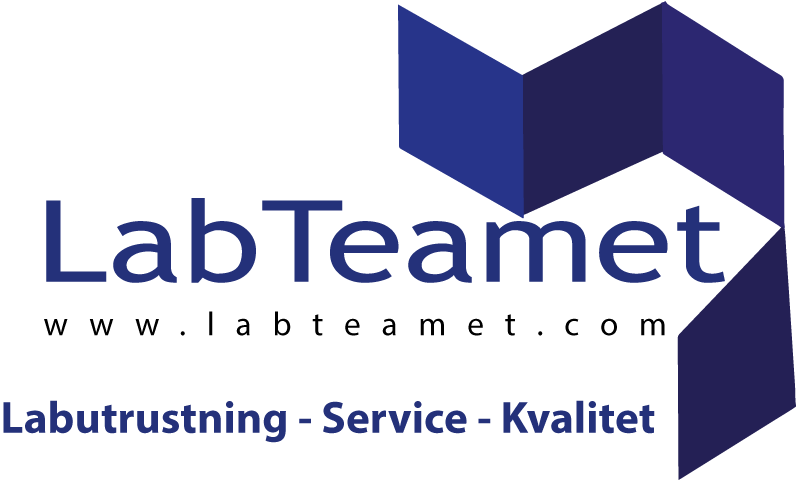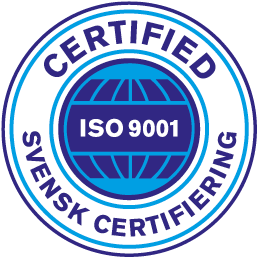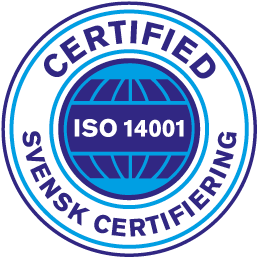Vatten i ditt laboratorie
Vatten i ditt laboratorie
Hydrolab har fokuserat på laboratorievatten sedan nittiotalet och erbjuder skräddarsydda lösningar för att möta olika krav. Våra lösningar tar hänsyn till flera kriterier såsom internationella standarder, branschriktlinjer, krav från mätutrustningstillverkare, investerings- och driftskostnader samt kundpreferenser.
042-300 91 30
Frågor? Ring kundtjänst
Hydrolab – Water in your laboratory
Water in the laboratory is the main area that Hydrolab is working on since the nineties. Looking for comprehensive solutions for various applications requiring the right quality of water. In this work, many Polish and international standards, guidelines of the selected industry, growing requirements of measuring equipment manufacturers, investment and operating costs, as well as individual wishes of customers should be taken into account.
Depending on the industry, water should meet the parameters of such standards: ISO 3696: 1999, ASTM, FP, CLSI. The basic standards for water quality in force in the analytical laboratory in Poland are: ISO 3696: 1999 and Pharmacopoeia for pharmaceutical and often cosmetic laboratories.The current ISO 3696: 1999 standard describes three levels of laboratory water purity.
III degree of purity
Water for basic laboratory use, used in most laboratory work, such as washing and rinsing glass or power supply for dishwashers, autoclaves or water baths, and for the preparation of reagent solutions. Water of this purity grade is obtained by single distillation, deionization or reverse osmosis.
II degree of purity
Analytical water with a very low content of inorganic, organic and colloidal impurities, suitable for high-sensitivity analytical applications, e.g. atomic absorption spectrometry (AAS) and for the determination of components present in trace amounts. Water of this quality can be obtained, for example, by multiple distillation or distillation preceded by deionization or reverse osmosis.
I degree of purity
Ultra-pure water, properly free of dissolved or colloidal ionic and organic impurities, meeting the most stringent analytical requirements, including the requirements of HPLC, GC, mammalian cell culture and molecular biology. Obtaining this water is possible from water of purity class 2, subjecting it to further treatments, e.g. reverse osmosis or deionization, followed by filtration through a 0.2 μm membrane filter to remove particles of substance or distillation twice in a quartz apparatus.
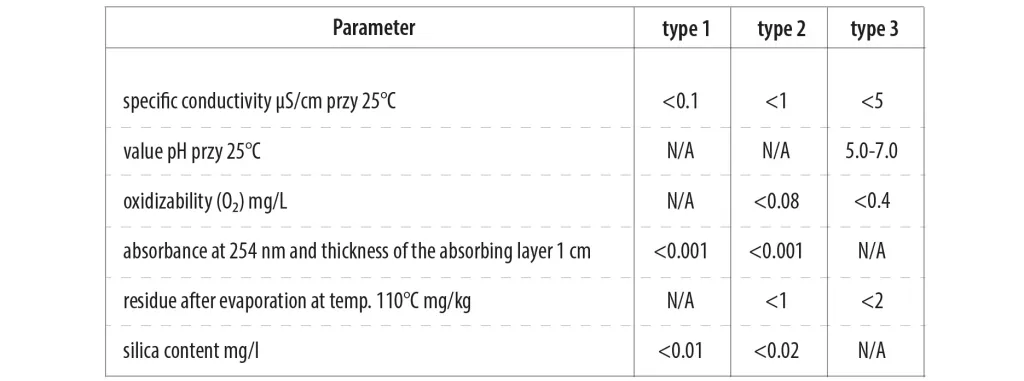
In the pharmaceutical and cosmetics industry, water is also the most commonly used substance. It serves as a finished product, as an ingredient in many pharmaceutical and cosmetic preparations, but also as a washing agent. It is a strategic substance subject to numerous legal regulations, mainly Pharmacopoeia requirements.
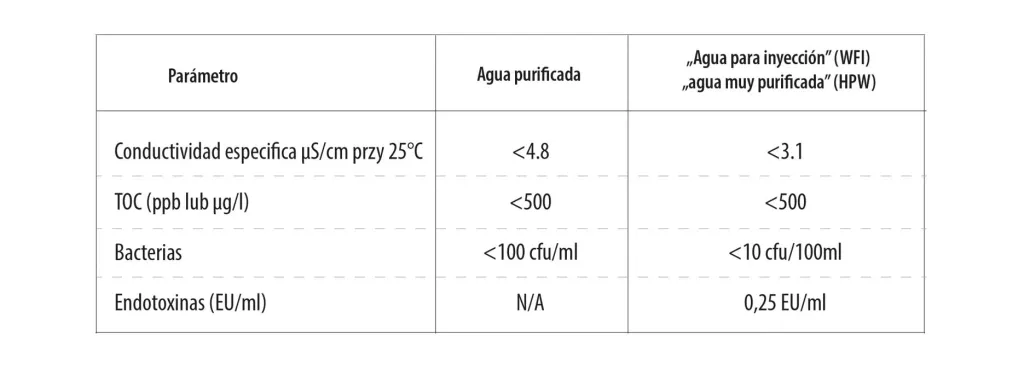
The basic methods of obtaining laboratory waters that meet the above standards are distillation, ion exchange, membrane techniques (mainly reverse osmosis) and electrodeionization. The source of laboratory water is tap water, its quality and level of pollution has a significant impact on the effective work of these techniques. The main contaminants of tap water include inorganic ions, organic substances, particles / colloids, bacteria and gases.
Hydrolab designs and manufactures laboratory demineralizers for the treatment of tap water in accordance with the guidelines of Polish and European standards. It uses modern technologies, the mentioned ion exchange, reverse osmosis and electrodeionization as well as mechanical filtration, adsorption, iron removal, softening, microfiltration, ultrafiltration and UV radiation 185/254 nm.
Mechanical-carbon-softening filtration based on module A2 is a common element of most Hydrolab demineralizers. This filtration prepares tap water for the reverse osmosis process. Mechanical filtration aims to remove all suspensions and solids up to 1 μm from water.The next stage in module A2 is the water softening process. It involves the removal of ions that are responsible for the hardness of water by passing water through sodium cation exchanger. When water flows through the ion exchange resin, calcium (Ca2 +) and magnesium (Mg2 +) ions are exchanged for sodium (Na +) ions. The last stage is filtration on a bed of activated carbon, whose main task is to remove chlorine, its derivatives, organic compounds and substances that are responsible for the bad taste, color and smell of water.
The large surface and high porosity of activated carbons (1 gram has an area of about 800 m2), as well as the material retained on it, create a favorable place for the development of microorganisms. Therefore, the working time of the A2 module is maximum 6 months. The initial filtration in module A2 is followed by an important stage of water purification – the reverse osmosis process.
The reverse osmosis membrane retains 96-99% of organic and inorganic impurities dissolved in water. The specific conductivity of osmotic water is from a few to several microsimens per centimeter (μS / cm). The degree of retention of the reverse osmosis process is variable (96-99%), depending on salinity, temperature, pressure and flow rate of the water feeding the membrane.
The semi-permeable osmotic membrane consists of many layers wound on a perforated mandrel placed inside the membrane. Contaminated water is pressed under pressure onto the surface of the membrane, where water particles diffuse through the membrane. Contaminants are separated and discarded to drain (sewage system). Purified water enters through the holes into the central stem and under pressure exits from the membrane.
The reverse osmosis process determines the efficiency of the entire device, and the quality of the water produced directly affects the working time of the subsequent stages of purification. Applied pressure and temperature have a significant impact on this process.
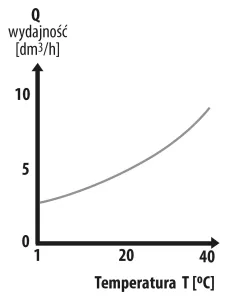
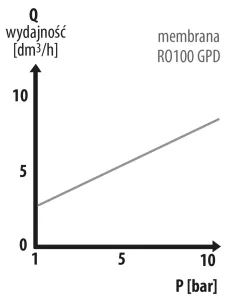
The water produced at this stage is the output water for the Technical series devices that, under optimal working conditions, produce water of the III degree of purity according to ISO 3696: 1999. By adding the next stage of water purification, which is ion exchange, we can obtain second grade purity water according to ISO 3696: 1999. Deionization modules contain beds of mixed ion exchange resins in the ionic form H + / OHˉ. Osmotic water is purified on deionization columns, where the remaining mineral salts are captured. In the ion exchange process, ions and molecules still present in water having a certain charge are bound by ion exchangers (ion exchangers). After this process, its conductivity falls below 0.1 μS / cm. Ion exchange resins guarantee constant water quality until the module capacity is exhausted.
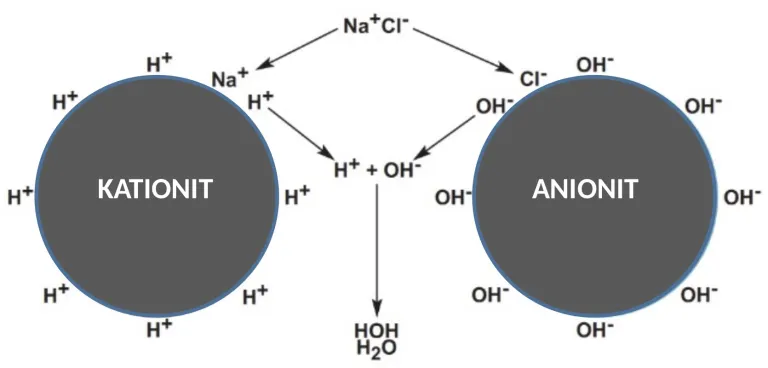
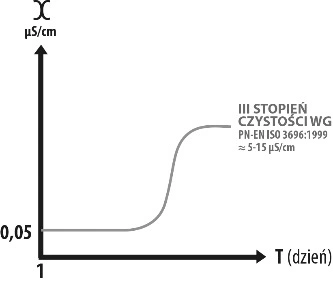
The water produced at this stage is the output water for Technical Plus, HLP, Spring series devices that produce water of the 2nd degree of purity according to ISO 3696: 1999.
To obtain water grade I according to ISO 3696: 1999, we must expand the above system with further stages of purification. The basic element is the microfiltration process as well as ultrafiltration and UV radiation.
The microfiltration capsule is made of a two-layer membrane made of cellulose acetate or polyethersulfone with pore sizes of 0.2 μm and 0.45 μm. Working capacity is the number of pores in the membrane equal to the number of bacteria retained on a given membrane surface. It is 1 x 107 CFU / cm2 for Brevundimonas diminuta.
Ultrafiltration, on the other hand, is a low-pressure separation process that uses porous asymmetrical membranes with a pore diameter from 0.001 to 0.1 μm, allowing water, salt and sugars to flow through the membrane, and separating proteins and larger particles. It perfectly reduces endotoxin levels.
The radiation of UV lamps is used to disinfect water. These devices emit radiation at a wavelength of 254nm, which causes a photochemical reaction damaging the DNA structures of microorganisms. Radiation with a wavelength of 185nm, through the photooxidation process, reduces the level of the TOC parameter.
The water produced at this stage is the output water for the HLP, Spring, R and Ultra series devices that produce water of the 1st degree of purity according to ISO 3696: 1999. The diagram below illustrates the dependence of the technology used on the degree of water purity and demineralizer models that meet this dependence.
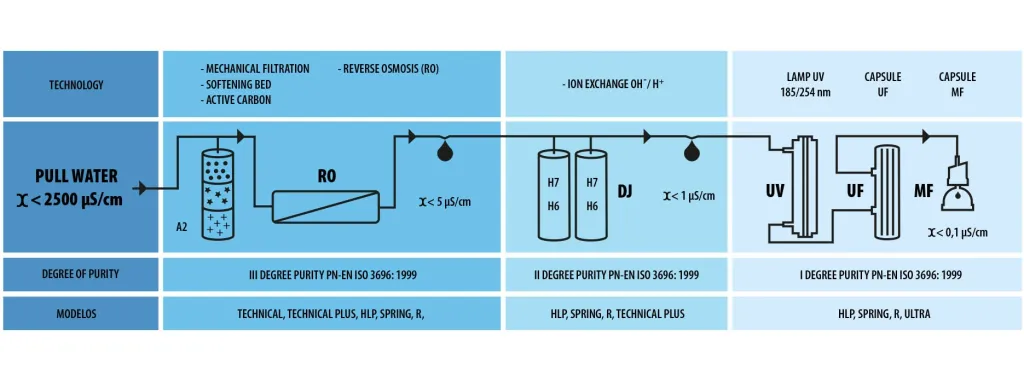
All stages of water purification are fully automated and maintenance free. During the production, storage and distribution of purified water, the process of continuous monitoring of its parameters that reflects the degree of purity is extremely important. This issue is particularly important in many industries, such as the pharmaceutical industry, which is fortified by the already mentioned standards (Pharmacopoeia), as well as in analytical laboratories (ISO 3696 standard). In addition to the requirements applied by relevant standards and regulations, the requirements of users of water purification systems, which are often more stringent, are important.
